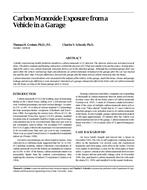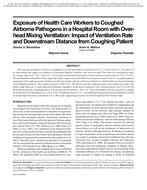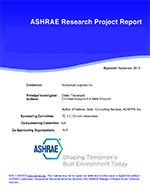This product is a zip file that contains files that consist of PowerPoint slides synchronized with the audio-recording of the speaker, PDF files of the slides, and audio only (mp3 format) as noted.
Buildings located in an urban area influence each other: (1) solar radiation affected by shading from nearby buildings, (2) solar reflection and absorption, (3) longwave radiant heat exchange. In addition, these buildings release heat to the surrounding environment and change the local microclimate (ambient air temperature and humidity) which in turn influences building energy demand. Nearby buildings may be served by a district energy system to meet their aggregated demands. This seminar presents and analyzes these inter-building effects which are essential to consider when designing or retrofitting a district of urban buildings for performance improvements.
- Monitoring Inter-Building Conditions By Means of Human-Centric Techniques for Investigating Indoor-Outdoor Microclimate and Building Energy Needs< /br> Anna Laura Pisello, Ph.D., University of Perugia, Perugia, Italy
- Exploring the Influence of Urban Context on Building Energy Retrofit Performance Via Hybrid Deep Learning and Simulation Approaches< /br> Rishee Jain, Ph.D., Stanford University, Palo Alto, CA
- Citylearn: Multi-Agent Demand Response for Connected Communities< /br> Zoltan Nagy, Ph.D., Associate Member, The University of Texas at Austin, Austin, TX
- Modeling Urban Building Interactions Using Energyplus< /br> Tianzhen Hong, Ph.D., Fellow ASHRAE, Lawrence Berkeley National Laboratory, Berkeley, CA
- A Graph-Based Hybrid Approach Towards Building Energy Prediction in an Urban Context By Integrating Inter-Building Impacts< /br> Yuqing Hu, Ph.D., Penn State University, State College, PA
Product Details
- Published:
- 2023
- Units of Measure:
- Dual
- File Size:
- 1 file , 52 MB
- Product Code(s):
- D-TO22Sem19


